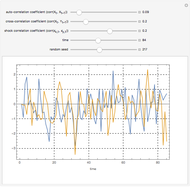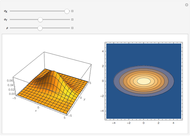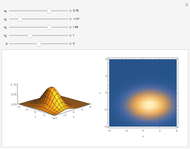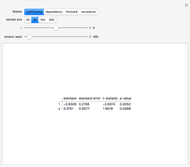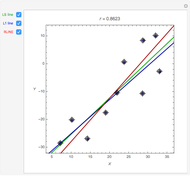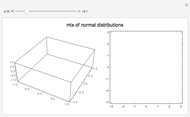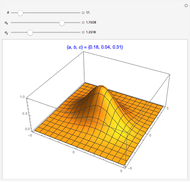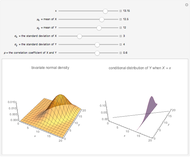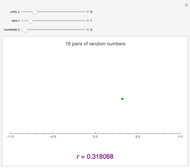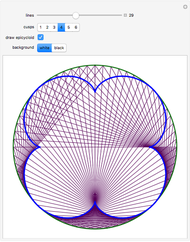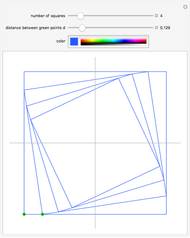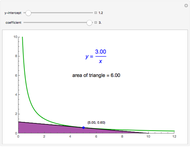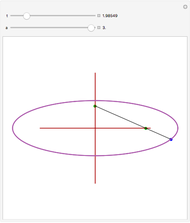Correlation of Bivariate Random Data

Requires a Wolfram Notebook System
Interact on desktop, mobile and cloud with the free Wolfram Player or other Wolfram Language products.
This Demonstration constructs two lists of random numbers of length  and calculates the Pearson product-moment correlation coefficient
and calculates the Pearson product-moment correlation coefficient  as if the lists were bivariate data. For a random sample such as this, the coefficient is expected to be close to zero, with no correlation. As you increase the sample size with the sliders, the coefficient (shown with the green dot) fluctuates less and less as it floats over zero.
as if the lists were bivariate data. For a random sample such as this, the coefficient is expected to be close to zero, with no correlation. As you increase the sample size with the sliders, the coefficient (shown with the green dot) fluctuates less and less as it floats over zero.
Contributed by: Jamie Wickham-Jones (March 2011)
Open content licensed under CC BY-NC-SA
Snapshots
Details
This computes a standard statistical quantity, the coefficient of correlation. Those studying this material for a statistics course will recognize several features in the initialization and will see how the coefficient is calculated. (The correlation can be computed directly via the built-in Mathematica function Correlation.)
Permanent Citation
"Correlation of Bivariate Random Data"
http://demonstrations.wolfram.com/CorrelationOfBivariateRandomData/
Wolfram Demonstrations Project
Published: March 7 2011







